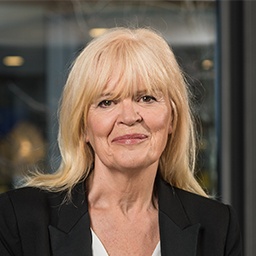Technology spending has been relatively low in the hospitality industry compared with sectors such as financial services and telecoms, and certainly IT spending in Europe, Africa and the Middle East (EAME) falls short of what is spent in the United States. The discrepancy between the U.S. and EAME regions may be due to the nature of the hotel industry in these markets, with EAME having smaller, independent properties, which do not enjoy large tech budgets.
So why does the wider hospitality sector spend so little on IT compared to other sectors such as retail and finance? As guests in hotels are unaware of the level of tech spending, it could be that the investment in the furniture and fittings takes priority … that is, until the Wi-Fi fails. Or perhaps IT managers, who are competing with other departmental managers for their share of the budget, are less successful at internal marketing and are forced to do more with less. Further, the hotel industry is a high-touch, rather than high-tech industry and upscale properties are more likely to employ extra staff than additional technology, particularly in markets where labor is cheaper than technology.
In addition, IT budget decisions are frequently taken by owners rather than operators or managers, and technology is viewed as a cost rather than an investment.
What do hotel properties spend on technology?
According to research from the IT Benchmark survey (EHL, 2014), hotels in the EAME markets only allocated a relatively small percentage of revenue (1.5 per cent) for technology expenditure. Additionally, they spent on average 726 euros per year per room, amounting to some 182,327 euros per property, with the highest spending in the Middle East market and the lowest spending in Central Europe.
An unattractive market for IT suppliers?
In the past, property management system (PMS) software has been the biggest single tech investment by hotels and this market has been dominated by one supplier, MICROS. The PMS serves as the main decision support system, linking point of sales, automation of all front desk activities, financial systems, client information, room allocation and distribution networks and is key to ensuring the smooth operational running of the hotel. The domination of this major player in the PMS market and the low budget allocation for IT spend makes technology development for the sector less attractive for IT suppliers and developers. Consequently, there has not been any recent, dramatic or new innovation in technology for hotels since the advent of the PMS, and much of the technology used in hotels has been adapted from retail or the home technology market. With the migration of the PMS and other operational software to cloud-based systems and remote servers, this will reduce costs for hotel and reduce capital expenditure even further.
Future spending will be focused on customer-facing technologies
Many analysts forecast an increase in tech spending in 2017. As for the U.S. market, the Hotel Technology (HT) 2016 Lodging Technology Study states that 54 per cent of U.S. hotels will increase their tech spending, with an average technology budget of 4.9 per cent of total revenue. Much of this spending will be on customer-facing technology, payment security, guest room technology, bandwidth, and mobile engagement. Similarly in the EAME markets, many of the major hotel groups will focus on customer engagement and enabling technologies, mostly faster bandwidth, to serve their customer.
In the EAME market, the priorities recently have been on internet provision (18.6 per cent), software (11.4 per cent) and server (10.0 per cent) upgrades, which is in line with the increased demand for greater speed and availability of internet bandwidth so that customers can use their own devices and apps services at hotels.
The technology challenges ahead focus on data security, particularly compliance requirements for payment cards and, in the widest sense, preventing data breaches, particularly in a mobile environment. The challenge is also in meeting the escalating expectations of customers, whose homes are wired with high-speed internet, interactive television and location-based devices. As the ‘Internet of Things’ (IoT) becomes more prevalent, then this bandwidth will have to be ramped up dramatically to support customers who are controlling their home environment, chatting with their children via FaceTime and catching up on their online gaming activities. The main technology challenge for hoteliers will be keeping up with the increasing needs of customers, while maintaining the integrity of their tech environment.




